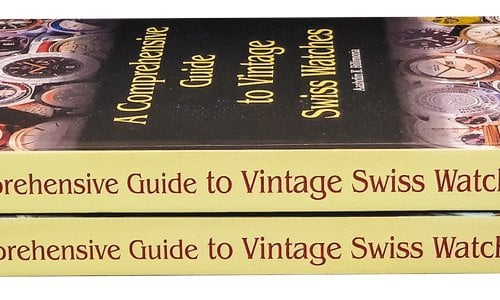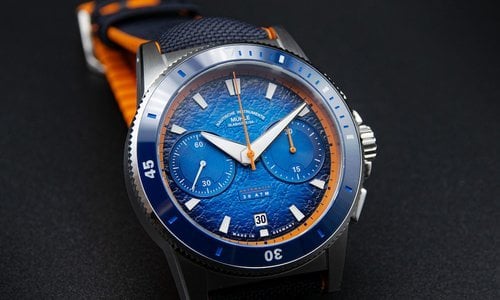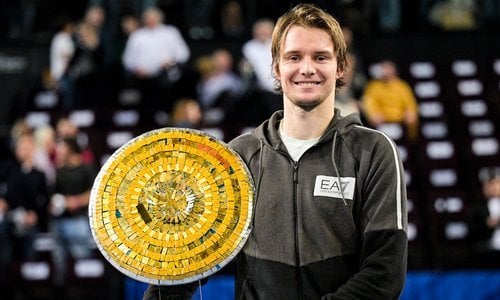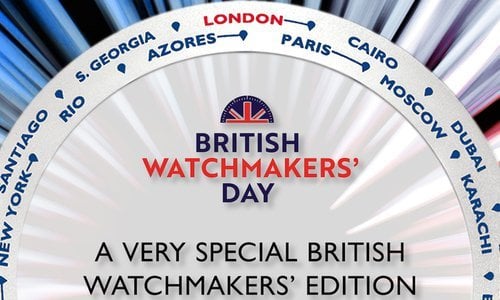2015 was a transformative year for the luxury industry across the globe, as new technologies, digital advances, currencies, wealth, media & marketing channels spurred a seismic power shift from brands to consumers, Baby Boomers to Millennials, traditional media to social, and West to East – to name a few. But how these formidable trends will impact and evolve the industry in the year ahead has remained a mystery – until now.
Here, Daniela Aroche, Editorial Director of Luxury Society, presents a peek into the future for luxury brands via predictions from Luxury Society Knowledge Partners and industry experts.
THE LUXURY SPHERE AS IT STANDS
The luxury industry has flourished for the past 10 years, but the good times have started to stall and brands are now facing a possible power shift from East to West. Nevertheless, at the same time, connectivity will continue to drive new opportunities in digital innovation, with the internet and social media reaching new frontiers.
Our latest data reveals that 2016 will be yet another challenging year for the luxury goods industry. In particular, the economic instability, social unrest, armed conflict and further threats of terrorist attacks in key luxury shopping destinations will continue to act as a drag on sales, not to mention the turmoil on the global foreign-exchange markets which could create further global currency wars for the industry.
Despite these headwinds, our latest data shows that the outlook for the luxury goods industry remains optimistic, with sales set to reach US$328 billion by 2016, having increased from US$317 billion in 2015. The new data also indicates that developed markets are largely outperforming emerging markets and that there is a clear shift in spend from East to West.
“We are likely to see the impact of 2015 events filtering through into 2016 with further geographical shifts”
In 2014 and 2015, mainland China posted its lowest growth in sales of luxury goods since our records began (a real decline of -3% and +1% respectively). The slowdown in growth also means that China will not overtake Japan to become the world’s second largest luxury goods market in the world anytime soon. Many of the world’s leading luxury brands have felt the backlash of the Chinese Government’s crackdown on lavish spending as well as deeper operational and economic problems across the industry.
Much of the positive global luxury sales momentum witnessed in 2014 and 2015 in the developed regions was actually fuelled by wealthy visiting Chinese tourists. However, after the Chinese government devalued the renminbi in August 2015, China’s foreign spending power has taken a turn for the worse. Added to that, the Chinese economy is set to continue cooling. These two challenges combined will almost certainly have an impact on the industry’s geographical sales mix, potentially triggering another shift in global revenue power in 2016.
The impact of a weakening economy is unlikely to stop wealthy Chinese consumers from travelling to buy their luxury goods in 2016, but it might change their destination of choice as well as total in-destination spend. Short-haul destinations such as South Korea and Thailand could reap the benefits. If Chinese consumers cut back on foreign trips further afield, then we could start to see yet another shift in the balance of power between the regions. Spending in North America, Western Europe and Japan could go down, while spending in China could even go up, thanks to price cuts and more people staying at home.
It is difficult to predict how the situation will develop in the future. What we can say, though, is that, according to our new research, 2015 has turned out to be one of the most strategically critical years ever for the global luxury goods industry and we are likely to see its impact filtering through into 2016 with further geographical shift.
LUXURY MEDIA & MARKETING CHANNELS IN 2016
In 2015, we saw luxury brands continue to ‘ramp up’ their digital efforts - shifting budgets from offline to online and recruiting more digital talent to their teams.
For many luxury brands, 2016 will see more of the same. But we think the forward-thinking ones won’t be ramping up, they’ll be integrating - placing digital at the heart of their operations rather than just adding more resource to siloed parts of their business.
Luxury businesses need to fully embrace digital because their consumers already have. Globally, 95% of luxury buyers are digitally connected and it’s estimated that 75% of luxury purchased are influenced by at least one digital touchpoint. No matter what the market, digital is at the centre of the luxury decision making process consult more digital resources than UK consumers when making a luxury purchase.
However, the brands which succeed in 2016 will not use the ‘mass market’ template of digital transformation, but will spend time thinking how they can use the tools at their disposal to create a unique digital luxury experience. A couple of developments in 2016 will help them to do this.
Firstly, virtual reality will enter the mainstream with the launch of the first commercial available VR headset from Facebook’s Oculus. Secondly, artificial intelligence - delivered by the likes of IBM’s Watson - will become more sophisticated and widespread.
But it’s important to note that success won’t just come from ‘dabbling’ in VR and AI, like luxury brands have dabbled with other luxury tools in the ‘ramping up’ phase, but in re-thinking their entire approach to digital across their entire business to create a unique, integrated online experience for their consumers. That will be the key to success in the coming year.
WORLD WEALTH DISTRIBUTION & ULTRA-HIGH-NET-WORTH CONSUMERS
Spending on luxury goods continued in 2015 to be focused within a handful of global cities and driven by a consumer class of global citizens. Beneficiaries of this global movement included brands with a strong presence in luxury capitals such as London, New York and Paris. Brands present at travel retail, particularly at airports, also profited from the growing number of global travellers.
The effect of foreign exchange rates on luxury purchases was a strong driving force in 2015. We see the impact of foreign exchange continuing to weigh in on luxury purchases in 2016. However, the continual strengthening of currencies such as the US Dollar and UK Sterling may deter tourist shoppers. Similarly, the threat of terrorist attacks will, we believe, weigh on the minds of some consumers and potentially curb travel rates to certain destinations.
A relative tumultuous macro-economic situation across many emerging markets in 2015 has been one of the contributing factors to a growth in spending on fine jewellery, watches and collectibles. In 2016, we believe there will be a growing preference for high-ticket items across these categories. Consumers seek assets with a tangible value that will appreciate over time and can be liquidated if needs be.
THE MILLENNIAL GENERATION & THEIR CHANGING TASTES
One of the biggest trends we are seeing among the millennial generation that will continue into 2016 is the drive for live events and more experience based spending. Today, one in four millennials would rather pay money for an experience rather than a product. Everyone, regardless of age, has that one team or one performer that they follow, track tour dates, memorize team schedules and look forward to the night when they can see all of the action, LIVE.
Millennials are quickly changing the live event industry through the way they research, purchase, experience and amplify these moments. They are looking for brands to not only host these experiences but to also create a frictionless consumer journey from getting the tickets all the way to sharing their pictures on social media. That means easy online access with mobile-first capabilities, connected wifi at the event and follow up connection points to relive the experience.
Implications of this group’s behavior are evolving the live event experience (before, during and after) for the industry and consumers. They are the generation that equates value to memories and experiences; brands can no longer sell them a product but rather create an experience with them.
This trend will continue to transform and evolve from what we have seen in the past as we enter the new year.
THE DIGITAL FACTOR & LUXURY’S CHALLENGES
I think that every single year since at least 2008 has been forecasted as “the year of mobile,” but I believe that in 2015 this finally rang true. For the first time we saw that Google’s mobile search volumes surpassed those of searches via desktop. Companies such as Net-a-Porter (now Yoox Net-a-Porter) reported new records in mobile e-commerce sales and it’s been estimated that mobile commerce now represents 30% of all US e-commerce sales. On top of that, working with a range of digital marketing luxury execs, I’ve seen that many have finally taken a “mobile first” approach of first designing for mobile interaction, and then making sure it also works on desktop, unlike what was done in past years.
Mobile will continue to be a priority in 2016 but with a more focused look at certain aspects, such as messaging apps.
One of the biggest forces to the digital world in 2016 is the continued growth and sophistication of messaging apps such as WhatsApp, WeChat (mostly in China), Facebook Messenger, and the like. Luxury brands may wonder what place they have in a world of two friends texting with one another, but if we look at the functionalities quickly being incorporated into these environments, we can see that there is possibility for a real commerce platform.
Today on WeChat it’s possible to: book flight tickets, check your banking account, download product catalogs, order a taxi, find local boutiques, buy products, talk to brand customer service reps, make restaurant reservations, and so much more.
This advancement in China hasn’t been lost on Facebook, operator of Messenger and WhatsApp, and we’re seeing new functionalities being rolled out by the minute, with full integration expected by 2016. Of special note is Messenger’s concierge service, M, which aims to revolutionize the way we go about our daily lives. From asking M, in plain English, to help find an open table at a local restaurant or to book a flight to Miami, it’s believed that we should have a new and very helpful “friend” come 2016.
A NEW AGE: THE LATEST GENERATIONAL & RETAIL TRENDS
2015 witnessed many retail trends that I believe will be sticking around in 2016, notably the editorialisation of retail, the advent of fully shoppable virtual realities, an uptick in ethical attitudes as a driving force not a compromising burden, and the dawn of ‘beta’ (trial-and-error) brand mentalities. Contextualised, culturally astute and super-socialised commerce were also more widely embraced, as were revised understandings of gender, identity and consumer tribes and ‘fandoms’.
In terms of new, or interestingly evolved trends for 2016, here are some more key predictions:
- Shape-shifting spaces: The direct result of brands needing to extend their role and remit as entertainers, educators and also enablers. This will take the form of new collectives, still deeper examples of hybridisation and also concepts attuned to borrowing (such Everlane’s Room Service concept that saw the e-tailer briefly inhabit hotel rooms to take a temporary grip on physical retailing). The premise is ‘owning over becoming’ which the luxury sector will embrace by connecting their audience with increasingly rarefied experiences and access of a highly topical, often intellectual nature. This inherently connects to the below:
- Experiential and exploration-based modes of commerce: That acknowledge a growing desire for experiences over outright ownership, as well as a distinct need for retailers to counterbalance the rising use of predictive analytics and algorithms with concepts rooted in unpredictability, choice, impulse and the exhilaration of surprise.
- Ephemeral moments and digital delay: Two ideas that illustrate how digital retail must evolve from being synonymous with everywhere, anytime ubiquity to a playing field in which to generate both ‘now-or-never’ moments of absolute shopping hunger and the ‘wait-and-anticipate’ thrill of sustained delayed desire.
- Spirituality: As the luxury sector continues to attune to an economy motivated by services, experiences and the possibility of personal connections (with the brand but also other brand fans), modes of engagement and even products rooted in a sense of imaginative, meaningful purpose – including those that explore a more spiritual, wellbeing-focused outlook – will have a significant resonance.
Find out how to join forces with Luxury Society as an official Knowledge Partner and position your business as an undisputed luxury thought leader, contact: [email protected]
Source: Europa Star December/January 2016 Magazine Issue




